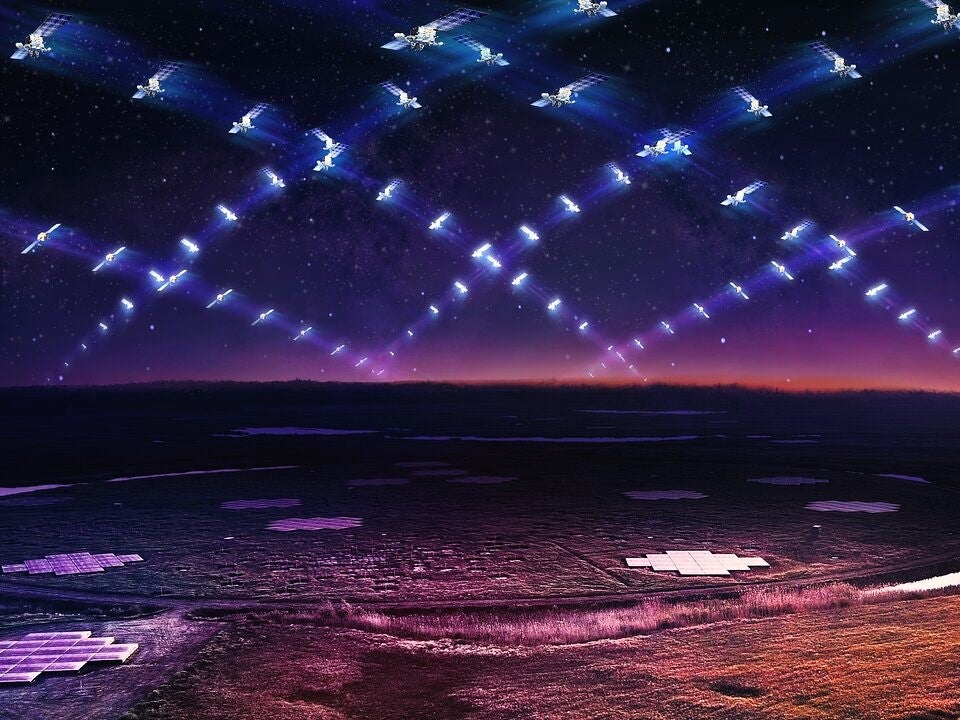Elon Musk’s Starlink satellites are leaking radiation that harms deep space astronomy, study warns
SpaceX’s space internet network already has more than 4,000 satellites

Your support helps us to tell the story
From reproductive rights to climate change to Big Tech, The Independent is on the ground when the story is developing. Whether it's investigating the financials of Elon Musk's pro-Trump PAC or producing our latest documentary, 'The A Word', which shines a light on the American women fighting for reproductive rights, we know how important it is to parse out the facts from the messaging.
At such a critical moment in US history, we need reporters on the ground. Your donation allows us to keep sending journalists to speak to both sides of the story.
The Independent is trusted by Americans across the entire political spectrum. And unlike many other quality news outlets, we choose not to lock Americans out of our reporting and analysis with paywalls. We believe quality journalism should be available to everyone, paid for by those who can afford it.
Your support makes all the difference.SpaceX’s Starlink satellite constellation is emitting radiation that is harmful to deep space astronomy, according to a new study.
The space-based internet network is made up of more than 4,000 satellites in low-Earth orbit – the latest of which were launched on Sunday night – with SpaceX boss Elon Musk planning to extend the constellation to nearly 12,000 satellites over the next few years.
Astronomers have previously complained about the light pollution from Starlink satellite clusters, which is known to impact optical observations, however the latest research uncovered a different source of disturbance that also impacts radio astronomy.
Scientists using the Low Frequency Array (LOFAR) telescope, made up of connected antennas spread across Europe, measured a low-frequency radio hum from 47 of 68 Starlink satellites observed.
“This frequency range includes a protected band between 150.05 and 153 MHz specifically allocated to radio astronomy by the International Telecommunications Union,” said Cees Bassa, an astronomer at the Netherlands Institute for Radio Astronomy and co-author of the research.
The study, titled ‘Unintended electromagnetic radiation from Starlink satellites detected with LOFAR between 110 and 188 MHz’, was published in the peer-reviewed journal Astronomy & Astrophysics.
There are more than 1.5 million Starlink subscribers across 56 countries, with SpaceX primarily targeting people in remote areas without access to telecommunications infrastructure.
The number of Starlink satellites already in operation far exceeds any of its rivals, which include the UK’s OneWeb constellation of around 650 satellites.
“Our simulations show that the larger the constellation, the more important this effect becomes as the radiation from all the satellites adds up,” said Benjamin Winkel, a researcher from the Max Planck Institute for Radio Astronomy in Germany.
“This makes us worried not only about the existing constellations but even more about the planned ones – and also about the absence of clear regulation that protects the radio astronomy bands from unintended radiation.”
SpaceX has previously worked with astronomers and observatories to help mitigate against the unintentional impacts of its satellites, and the company is already in contact with the authors of the study.
According to the astronomers, SpaceX has already introduced design changes that could prevent the unintended emission from its next-generation Starlink satellites. The Independent has reached out to SpaceX for further information about these changes.
“We believe that the early recognition of this situation gives astronomy and large constellation operators an opportunity to work together on technical mitigations pro-actively, in parallel to the necessary discussions to develop suitable regulations,” said Gyula Jozsa, a co-author of the study.


Join our commenting forum
Join thought-provoking conversations, follow other Independent readers and see their replies
Comments